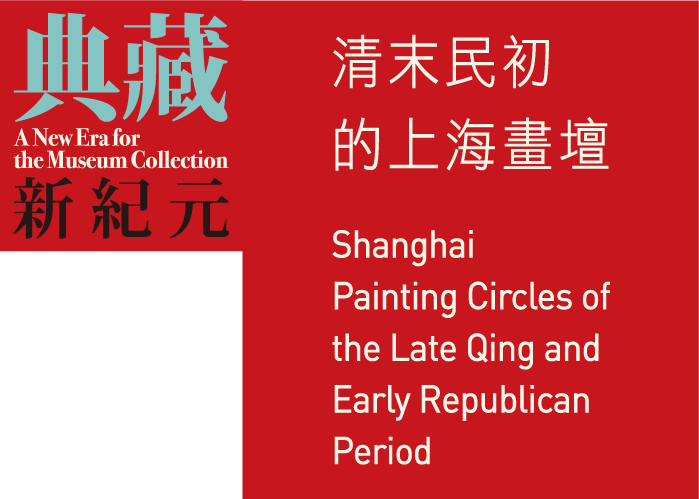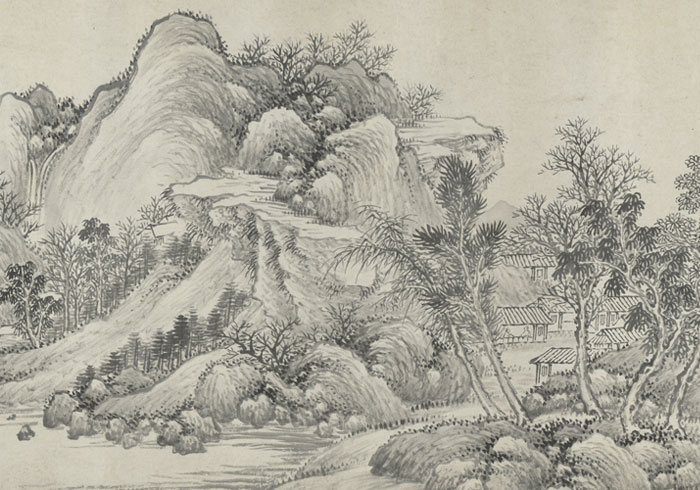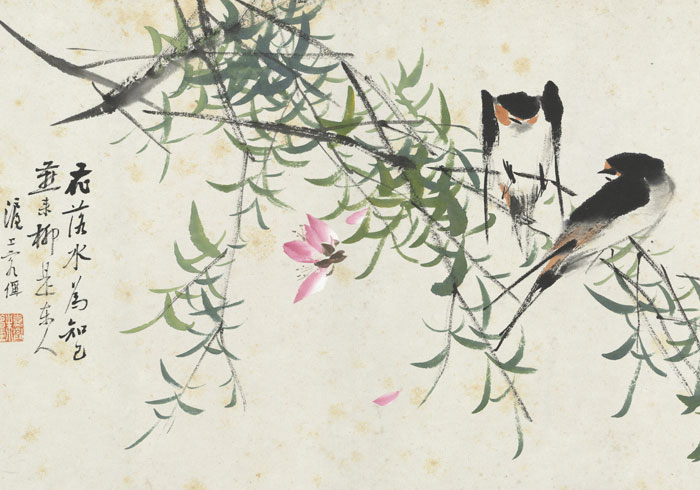Shanghai originally was one of the five treaty ports opened to foreign trade after China's defeat in the First Opium War, and the art market there flourished with the economic prosperity that resulted. When the Taiping Rebellion broke out in 1851, Shanghai's foreign settlement offered a safe haven that attracted many artists from surrounding areas to settle there, making it a confluence of numerous regional styles. The painters in Shanghai truly came from all directions. The works highlighted in this section of the exhibit include those by the Zhejiang artists Zhang Xiong and Zhu Cheng (of Jiaxing) as well as Ren Xun and Ren Yi (of Xiangshan); by the Anhui artists Xugu (from Shexian) and Hu Zhang (from Tongcheng); by Sha Fu of Suzhou and Ni Tian of Jiangdu in Jiangsu; and by Hu Yuan of Huating and Qian Hui'an of Baoshan near Shanghai. These painters, either settling in Shanghai or sojourning there to sell their works, became acquainted with each other and forged a style collectively known as the "Shanghai School." With decisive and direct brushwork as well as fresh and vibrant ink tones and colors, their innovative bird-and-flower, figural, and landscape subjects made for works both elegant and popular.
Landscape
- Zhang Xiong (1803-1886), Qing dynasty
- Handscroll, ink on paper, 30.8 x 94 cm
Zhang Xiong, a native of Jiaxing, moved to Shanghai after the 1860s. An important driving force in the early formation of painting circles in Shanghai, he excelled at bird-and-flower subject matter and was also a fine landscape artist.
This handscroll depicts a landscape of life in reclusion with hills by the water. In the middle section is a small building where two figures sit facing each other, which probably relates to the line of poetry inscribed on the painting that reads, "How good to have a friend of old come and sit down." Zhang Xiong used the style of Wang Hui, a prominent scholar-official painter earlier in the Qing dynasty, to render this autumn scene of desolation that nonetheless is filled with the lyrical view of literati. The handscroll is dated to the "bingchen" cyclical year, corresponding to 1856 and making it a work that Zhang had done before moving to Shanghai to further his career.
Album of Birds and Flowers
- Zhu Cheng (1826-1900), Qing dynasty
- Album leaf, ink and colors on paper, 24.3 x 40.3 cm
Zhu Cheng (style name Menglu, sobriquet Juewei), a native of Jiaxing in Zhejiang, was good at painting bird-and-flower subjects, his fame spreading widely. Businessmen were known to treasure his painted fans by keeping one tucked inside their sleeves.
This album, done by the artist at the age of 74, has a total of twelve leaves. In addition to the swallows are depictions of a magpie, crested myna, quail, and sparrows. Most feature a diagonal composition, the colors luminous and refreshing for an appealing charm. Zhu Cheng was gifted at quick brushwork to portray, for example, birds in flight. The angle taken is often unexpected, such as the fifth leaf using single lines to show the bird at the moment of flapping its wings in flight and looking back at the same time. The last leaf features a mingling of ink tones, the birds appearing indistinct and the brushwork lively and animated for a rich sense of rhythm, which aptly reflects the style of bird painting practiced in the Shanghai School.


